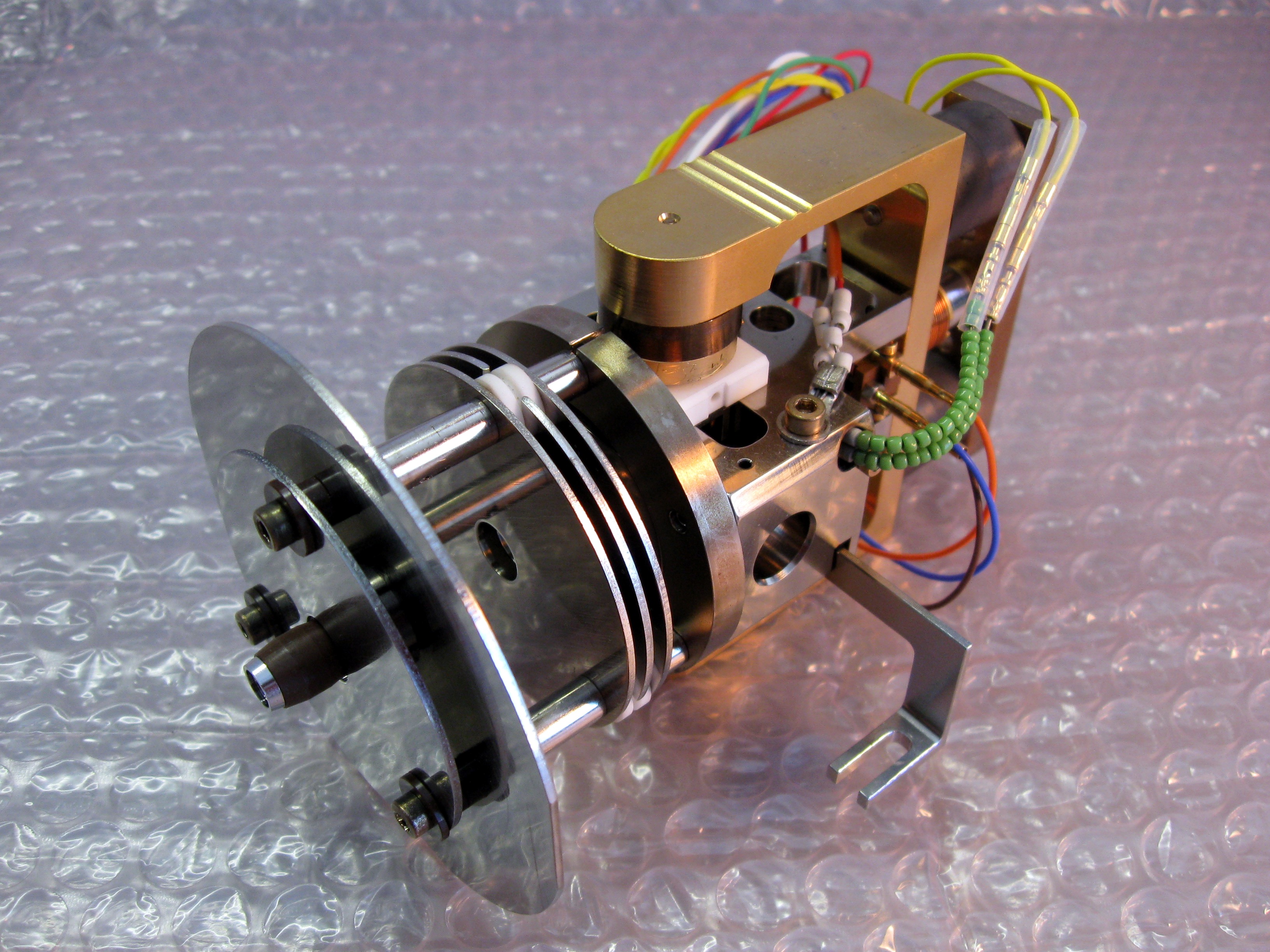|
Charge-transfer
Charge-transfer may refer to: * Intervalence charge transfer * Charge-transfer complex * Charge transfer band (absorption band) * Charge-exchange ionization, a form of gas phase ionization See also * Photoinduced charge separation {{dab ru:Перенос электрона ... [...More Info...] [...Related Items...] OR: [Wikipedia] [Google] [Baidu] |
Charge Transfer Band
193px, The intense color of tris(bipyridine)ruthenium(II) arises from a metal-to-ligand charge-transfer band. Charge-transfer bands are a characteristic feature of the optical spectra of many compounds. These bands are typically more intense than d–d transitions. They typically exhibit solvatochromism, consistent with shifts of electron density that would be sensitive to solvation. CT absorptions bands are intense and often lie in the ultraviolet or visible portion of the spectrum. For coordination complexes, charge-transfer bands often exhibit molar absorptivities, ε, of about 50000 L mol−1 cm−1. By contrast ε values for d–d transitions are in the range of 20–200 L mol−1. CT transitions are spin-allowed and Laporte-allowed. The weaker d–d transitions are potentially spin-allowed but always Laporte-forbidden. Charge-transfer bands of transition metal complexes result from shift of charge density between molecular orbitals (MO) that are predominantly metal in ... [...More Info...] [...Related Items...] OR: [Wikipedia] [Google] [Baidu] |
Intervalence Charge Transfer
192 px, The intense blue color of Prussian blue is a consequence of an intervalence charge transfer band. In chemistry, intervalence charge transfer, often abbreviated IVCT or even IT, is a type of charge-transfer band that is associated with mixed valence compounds. It is most common for systems with two metal sites differing only in oxidation state. Quite often such electron transfer reverses the oxidation states of the sites. The term is frequently extended to the case of metal-to-metal charge transfer between non-equivalent metal centres. The transition produces a characteristically intense absorption in the electromagnetic spectrum. The band is usually found in the visible or near infrared region of the spectrum and is broad. The process can be described as follows: :LnM+-bridge-M'Ln + hν → LnM-bridge-M'+Ln where L is a bridging ligand In coordination chemistry, a bridging ligand is a ligand that connects two or more atoms, usually metal ions. The ligand may b ... [...More Info...] [...Related Items...] OR: [Wikipedia] [Google] [Baidu] |
Charge-transfer Complex
In chemistry, a charge-transfer (CT) complex or electron-donor-acceptor complex describes a type of supramolecular assembly of two or more molecules or ions. The assembly consists of two molecules that self-attract through electrostatic forces, i.e., one has at least partial negative charge and the partner has partial positive charge, referred to respectively as the electron acceptor and electron donor. In some cases, the degree of charge transfer is "complete", such that the CT complex can be classified as a salt. In other cases, the charge-transfer association is weak, and the interaction can be disrupted easily by polar solvents. Examples Electron donor-acceptor complexes A number of organic compounds form charge-transfer complex, which are often described as electron-donor-acceptor complexes (EDA complexes). Typical acceptors are nitrobenzenes or tetracyanoethylene. The strength of their interaction with electron donors correlates with the ionization potentials of t ... [...More Info...] [...Related Items...] OR: [Wikipedia] [Google] [Baidu] |
Charge-exchange Ionization
An ion source is a device that creates atomic and molecular ions. Ion sources are used to form ions for mass spectrometers, optical emission spectrometers, particle accelerators, ion implanters and ion engines. Electron ionization Electron ionization is widely used in mass spectrometry, particularly for organic molecules. The gas phase reaction producing electron ionization is :M + e^- -> M^ + 2e^- where M is the atom or molecule being ionized, e^- is the electron, and M^ is the resulting ion. The electrons may be created by an arc discharge between a cathode and an anode. An electron beam ion source (EBIS) is used in atomic physics to produce highly charged ions by bombarding atoms with a powerful electron beam. Its principle of operation is shared by the electron beam ion trap. Electron capture ionization Electron capture ionization (ECI) is the ionization of a gas phase atom or molecule by attachment of an electron to create an ion of the form A−•. The reaction ... [...More Info...] [...Related Items...] OR: [Wikipedia] [Google] [Baidu] |
Photoinduced Charge Separation
Photoinduced charge separation is the process of an electron in an atom or molecule, being excited to a higher energy level by the absorption of a photon and then leaving the atom or molecule to a nearby electron acceptor. Rutherford model An atom consists of a positively charged nucleus orbited by electrons. The nucleus consists of uncharged neutrons and positively charged protons. Electrons are negatively charged. In the early part of the twentieth century Ernest Rutherford suggested that the electrons orbited the dense central nucleus in a manner analogous to planets orbiting the sun. The centripetal force required to keep the electrons in orbit was provided by the Coulomb force of the protons in the nucleus acting upon the electrons; just like the gravitational force of the sun acting on a planet provides the centripetal force necessary to keep the planet in orbit. This model, although appealing, doesn't hold true in the real world. Synchrotron radiation would cause the orbitin ... [...More Info...] [...Related Items...] OR: [Wikipedia] [Google] [Baidu] |


